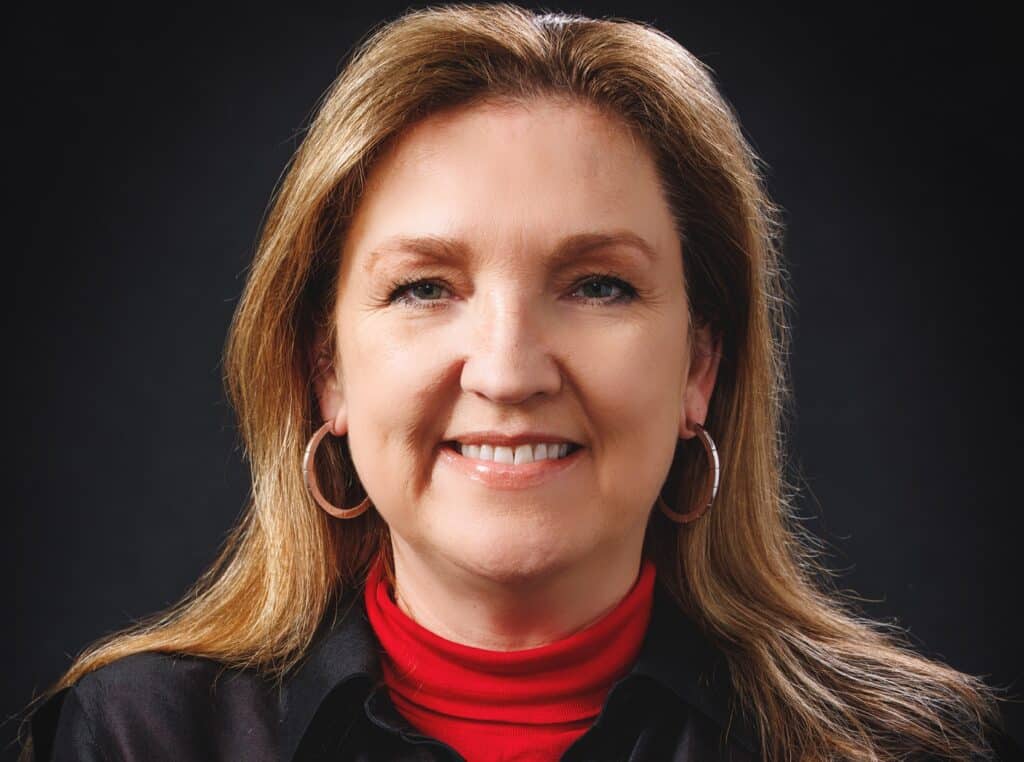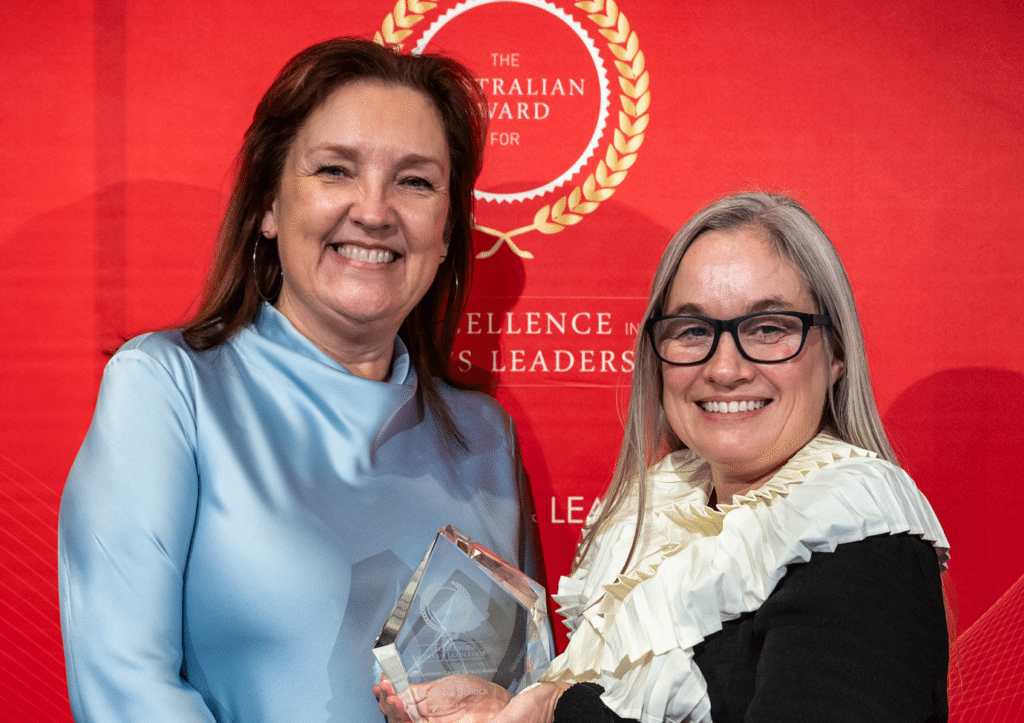Karen Taylor’s career has been anything but planned. But looking at her CV and the path she has taken to being named the CEO of Women & Leadership Australia (WLA) could leave you thinking otherwise.
She hasn’t taken promotion after promotion with a sole focus on one industry, nor did she start her first career in psychology with leadership aspirations. She hasn’t served in a CFO position, which is the most common prelude to taking a CEO role.
Rather, she’s taken opportunities as they have come up and been driven largely by the need to build financial security for her family. Now, she wants to share more about this drive to help normalise conversations about earning more money as an immediate and necessary ambition for many women.
“As a single parent for around 15 years, if I’m brutally honest, a lot of the career decisions I’ve made were driven by financial necessity, for a long time,” she says.
“I tried to search for and pick jobs that paid well so I could provide financial security for my girls.”
But while there was no set career plan, Taylor does say one thing she did deliberately do was examine opportunities carefully to determine how and if they could take her to the next step.
“If it wasn’t the perfect opportunity or the one I really wanted, I would reframe it in terms of being another opportunity for my career that could lead to the thing I really wanted. And in the meantime, it could pay the salary I needed.”
While Taylor always ensured the opportunities she did pursue would align with her values, she is open about the financial goals she had earlier on in her career in the hope it normalises the conversation among women.
Taylor’s kids are now independent, but her drive for achieving better financial outcomes has seen her make career changes, shift industries, pick up management positions and increasingly take on more responsibilities.
Having been in the CEO role of Women & Leadership Australia for around 18 months now, an organisation that provides courses and symposiums to support women in leadership, Taylor’s career now incorporates leadership of the organisation, as well as advocating for women’s financial security and empowerment. She does this by sharing some of her own experiences, as well as leveraging the research work Women & Leadership Australia does and the anecdotal evidence they have from the thousands of women they work with every year, to highlight some of the barriers facing women on pay, promotion and opportunity.
She also says that it’s important to think about what your years of experience bring and might extend to.
“I think we actually need to start talking about that. ‘Hey, I need to be paid well for the skills and the knowledge that I’ve accumulated over 40 years of working.”’

Taylor started her career in psychology but moved out of clinical work before moving into vocational education and training.
She took a job with Mission Australia and worked her way up the ranks and into higher management positions, giving her the experience to become Deputy CEO of the Australian Institute of Management. Taylor’s first CEO role was at Government Skills Australia
Taylor says she’s in a dream role at Women & Leadership Australia now, especially being a “card-carrying feminist” since the age of 14 and quickly realising that almost everyone working for Women & Leadership Australia is doing so because of their strong belief in the power of gender equity. She adds that the diversity of their workforce extends well beyond gender and results in a “range of terrific humans who work for us.”
“The key role of a CEO is to set the structure, set the strategy, set the tone and set the culture so that people can actually do their job to the best of their ability,” she says. “So with those things set, it’s then getting out of their way and letting them do those jobs.”
Sparking conversations is also essential for a leader, she says, even if it’s just about saying “hello”. She shares a strategy she once used in an office which involved putting time aside early to respond to emails and set things up for the day before actually blocking out time in the diary to ensure she was available to greet and check in with team members as they were starting the day.
Taylor says setting a tone around culture and strategy should be a no-brainer for leaders, but that she has seen many senior managers who routinely do the opposite and ultimately make it harder for people to succeed.
Looking into 2024, Taylor will be leading Women & Leadership Australia as it further grows its leadership courses and continues a national program of conferences.
She believes the next year will be pivotal for addressing some of the barriers holding women back from leadership.
Pay transparency particularly is set to be a game changer, with the Workplace Gender Equality Agency set to release the gender pay gaps of organisations with more than 100 employees within the first few months of the year.
“If people call it naming and shaming then so be it,” she says on firms seeing their gender pay gaps published. “If you have more than 100 employees, then you have an HR team. You should have the resources to address gender inequity.
Taylor says we should expect the competition for talent to also be a key issue for leaders in 2024, given the continued skills shortage and Australia’s low unemployment figures. That means workplaces will need to work harder at providing great policies for potential and existing talent, especially around flexibility, work-from-home options, paid parental leave and other areas. She especially wants to see more men taking up flexibility, highlighting how such trends will ultimately support women.
“Leaders need to focus on shifting the conversation about flexibility being a woman’s issue,” she says.
“Flexibility is about breaking down patriarchal structures which we know don’t just negatively affect women – they negatively affect men as well.”
Taylor also sees 2024 as bringing a greater push for more evidence on how leadership programs and other activities are actually shifting the dial for women in leadership. Women & Leadership Australia has been measuring such activities for some time, with a 2021 survey of 2000 participants highlighting what their programs have delivered for them.
The push for transparency on program success will also be important considering the gender pay gap data WGEA will be publishing. Organisations will want to see evidence of what works.
“We don’t want participants to be taking on courses and wasting their time on things that might be nice to do and feel good but don’t actually impact their world or work in any way,” she says.

Taylor highlights the role of Women & Leadership Australia in providing an alternative to more traditional coaching, especially for women who may spend a lot of time at work and at home dealing with the needs and demands of others and aspire to build on their own personal
“We hear from women that coaching is often just another way of trying to get them to do things a certain way when actually they want to do things their own way. And they ask, ‘why is my style or my approach less valued than others? Why do I need to be coached to be a certain way?”
As for providing a women-only program, Taylor says that the research shows women’s only programs provide psychologically safe environments. “We get the pushback, ‘what about the men’? But frankly, men have had it all their way for a really long time. And I’m not saying they don’t need support, but there is a whole lot of stuff out there that has been designed by men, for men.”
Taylor says that in her 18 months in the role, she’s genuinely been overwhelmed by the quality of the programs and symposiums.
“Yes the outcomes for women are driven by the quality of the content and the teaching and the practical solutions offered, but it’s also driven by the psychological safety of providing a women’s only environment,” she says.
Women’s Agenda has partnered with Women & Leadership Australia in 2024 to elevate the voices of women involved in their symposiums and programs and to report back from their events. You can check out all the upcoming symposiums here. https://www.wla.edu.au/symposium/

